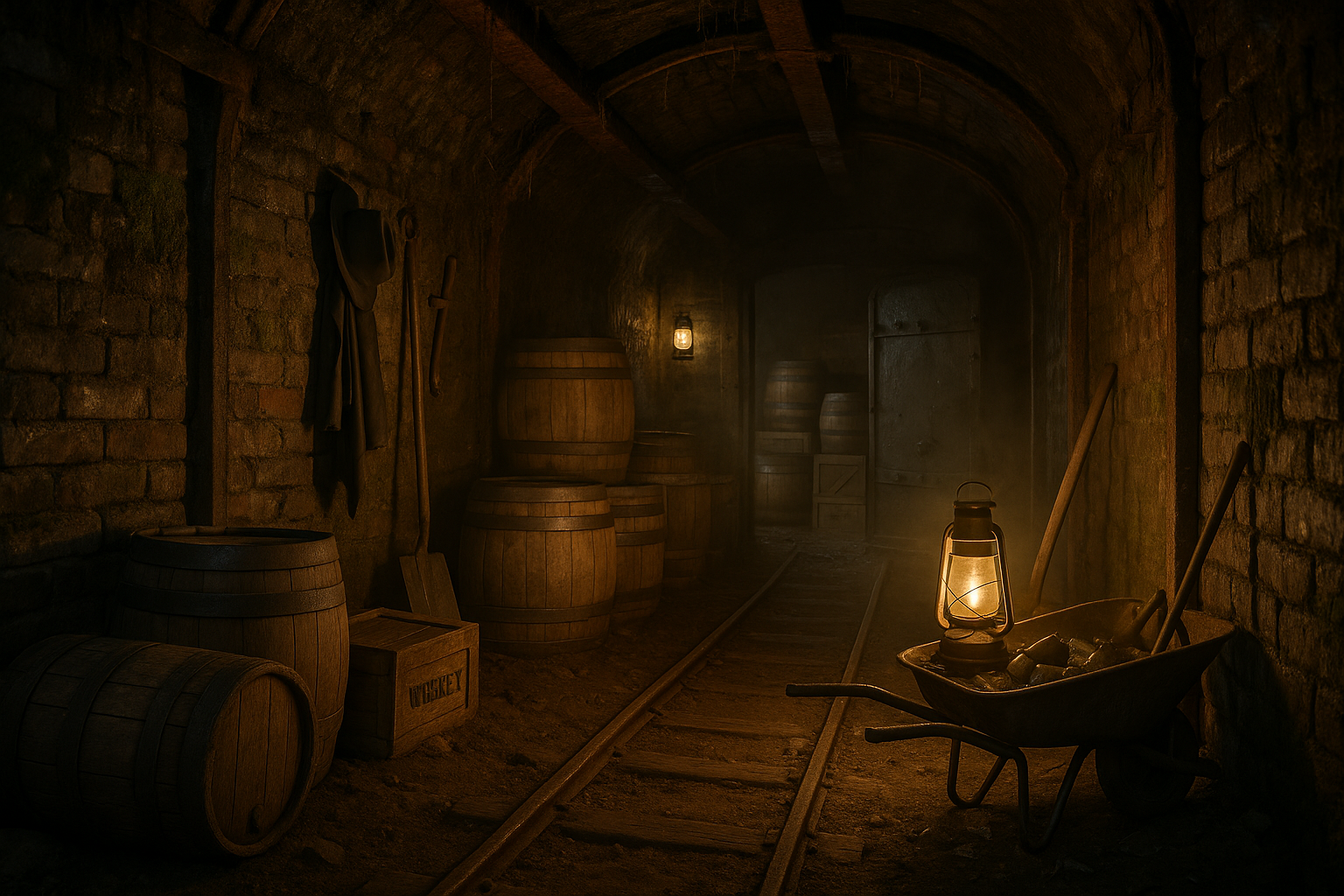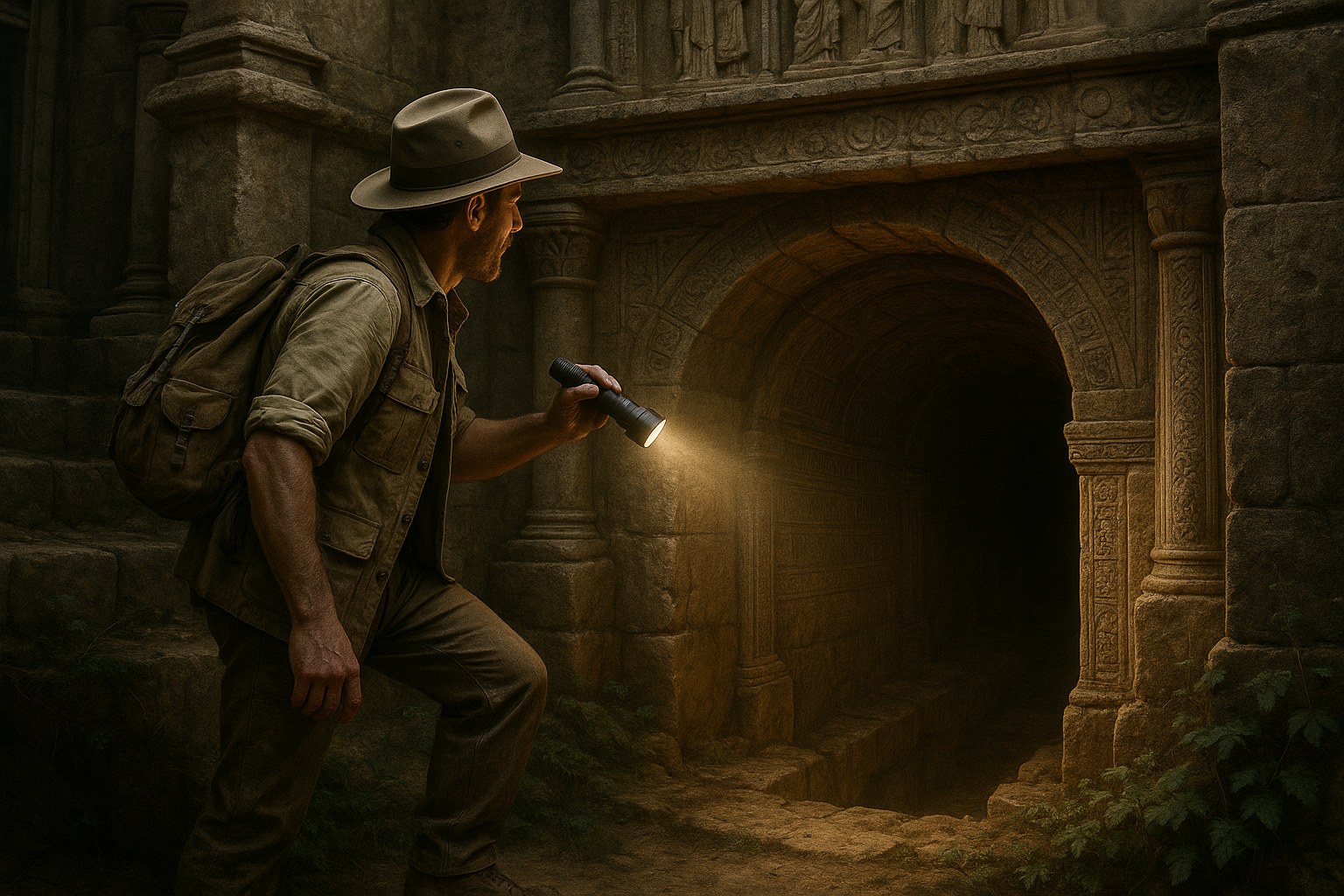In a world teeming with vast landscapes and sprawling cities, the allure of the hidden and the unknown captivates our imaginations like nothing else. Beneath our very feet lies a network of enigmatic military installations, shrouded in secrecy and speculation. These underground bases, often the subjects of conspiracy theories and whispered rumors, hold the keys to some of the world’s most guarded secrets. What goes on behind these fortified walls? What technologies are being developed, and what operations are being conducted away from prying eyes? Join us as we delve into the shadowy depths of these clandestine facilities and uncover the mysteries that lie beneath.
Our journey begins with a look into the origins of these secretive bases. During times of global conflict and political tension, nations have sought refuge underground, creating labyrinthine complexes designed to withstand anything from nuclear blasts to prying satellites. These facilities are not just relics of the past; they continue to evolve, adapting to new threats and technologies. We’ll explore the historical context that led to the creation of these underground fortresses, and how they’ve become integral to national security in ways that are rarely acknowledged publicly.
As we venture further, we’ll shine a light on some of the most famous—and infamous—secret bases around the globe. From the iconic Area 51, with its alleged extraterrestrial connections and top-secret aircraft tests, to Russia’s mysterious Yamantau Mountain complex, these sites have become the stuff of legend and intrigue. What really happens within these fortified walls? We’ll separate fact from fiction, revealing documented evidence and expert analyses that paint a clearer picture of their operations. With each revelation, the true purpose of these bases becomes increasingly fascinating, showcasing the delicate balance between military necessity and public curiosity.
Finally, we will consider the broader implications of these secret installations on society. What does the existence of such hidden operations mean for transparency and trust between governments and their citizens? Are these bases a necessary evil in a world fraught with potential threats, or do they represent a troubling trend towards secrecy and control? We’ll examine these questions, inviting you to ponder the ethical and societal dimensions of maintaining such clandestine facilities. As we uncover the secrets buried deep within these underground fortresses, prepare to question what you know about power, security, and the unseen forces that shape our world. 🌍🔍
Introduction to the Enigmatic World of Secret Military Bases
Secret military bases have long captured the imagination of conspiracy theorists, historians, and military enthusiasts alike. These clandestine facilities, often hidden away in remote locations or buried deep underground, are shrouded in mystery and intrigue. While some of these bases are acknowledged by governments, others remain classified, fueling speculation and curiosity. In this article, we delve into the world’s most famous secret military bases, exploring their history, purpose, and the myths surrounding them.
The allure of secret military bases lies in their clandestine nature and the potential secrets they hold. From the infamous Area 51 in Nevada to the lesser-known but equally intriguing Pine Gap in Australia, these facilities are often at the center of speculation about advanced technologies, extraterrestrial life, and covert military operations. While some of these stories are grounded in reality, others are the product of wild imaginations. Nevertheless, the fascination with these bases endures, as they continue to captivate the public’s interest.
One of the key reasons these bases remain a subject of fascination is their role in national security. They are often tasked with testing new technologies, housing sensitive information, or serving as strategic military outposts. The secrecy surrounding these operations is vital to maintaining a nation’s defense capabilities, but it also adds an air of mystery that fuels public curiosity. As we uncover the details of these secretive sites, we gain a better understanding of their significance in global security and the measures taken to protect them.
Area 51: The Epitome of Secrecy
Area 51, located in the Nevada desert, is perhaps the most well-known secret military base in the world. Officially named the Nevada Test and Training Range, this facility has been the epicenter of conspiracy theories and speculation for decades. The base was established in the 1950s as a testing ground for the U-2 reconnaissance aircraft, but its existence was not publicly acknowledged by the U.S. government until 2013.
Despite its official recognition, many details about Area 51 remain classified. This lack of transparency has led to numerous theories about the activities conducted within its confines. Some believe that the base is home to advanced alien technology or even extraterrestrial beings, while others suggest it is a testing ground for next-generation military aircraft. These theories are bolstered by reported sightings of unidentified flying objects in the area, which have been attributed to the testing of experimental aircraft.
The mystery surrounding Area 51 is further compounded by the strict security measures in place. The perimeter of the base is heavily guarded, and unauthorized access is prohibited. This high level of security has only served to heighten the intrigue, as it suggests that something significant is being concealed. Whether these secrets involve advanced technology, alien life, or something else entirely, the truth remains elusive, leaving the world to wonder what lies beyond the barbed wire fences.
For those interested in learning more about the myths and realities of Area 51, I recommend watching this informative video from the Discovery Channel titled “Inside Area 51: Secrets Revealed.”
The Role of Area 51 in Military Advancement
Area 51’s primary function has been the development and testing of advanced military technologies. The facility has played a crucial role in the development of several iconic aircraft, including the U-2 spy plane, the SR-71 Blackbird, and the F-117 Nighthawk stealth fighter. These aircraft were instrumental in advancing the United States’ reconnaissance and stealth capabilities during the Cold War and beyond.
The secrecy surrounding Area 51 is not solely for the purpose of concealing potential extraterrestrial artifacts. Rather, it is a necessary measure to protect sensitive technologies and information that could compromise national security if leaked. The testing of cutting-edge aircraft and weaponry requires a secure environment, free from the prying eyes of potential adversaries.
Despite the veil of secrecy, some information about Area 51’s contributions to military advancements has been declassified over the years. These disclosures have provided insight into the innovations developed at the facility and the role it has played in shaping modern military capabilities. As we continue to explore the mysteries of Area 51, it is important to remember that its primary purpose is to safeguard national security interests.
Pine Gap: The Heart of Australia’s Intelligence Operations
Pine Gap, located in the heart of Australia, is a joint defense facility operated by the United States and Australia. Officially known as the Joint Defense Facility Pine Gap, this base is integral to global intelligence operations and is one of the most significant satellite surveillance centers in the world. Its remote location and high level of secrecy make it a subject of intrigue and speculation.
Established in the 1960s, Pine Gap was initially intended to collect intelligence on the Soviet Union during the Cold War. However, its role has since expanded to include monitoring global communications, tracking missile launches, and conducting satellite surveillance. The facility’s capabilities are essential to the United States and Australia’s national security efforts, making it a critical component of their intelligence infrastructure.
The secrecy surrounding Pine Gap has led to numerous conspiracy theories, similar to those associated with Area 51. Some suggest that the base is involved in covert operations or the development of advanced technologies. Others claim that it is used to monitor extraterrestrial activity or that it serves as a strategic command center for global operations. While these theories are largely speculative, they highlight the fascination with the unknown and the desire to uncover the secrets hidden within Pine Gap’s walls.
The Strategic Importance of Pine Gap
Pine Gap’s strategic importance cannot be overstated. Its capabilities in satellite surveillance and intelligence gathering are critical to the defense strategies of both the United States and Australia. The base plays a vital role in monitoring global events, providing real-time intelligence that informs military and political decisions. This makes Pine Gap an indispensable asset in maintaining global security.
The collaboration between the United States and Australia at Pine Gap is a testament to the strength of their alliance. The facility is staffed by personnel from both countries, working together to ensure the smooth operation of its advanced systems. This partnership has strengthened the bond between the two nations, reinforcing their commitment to shared security interests.
Despite its importance, Pine Gap remains shrouded in secrecy, with limited information available to the public. This lack of transparency has fueled speculation about the true nature of its operations. However, the facility’s primary focus is on intelligence gathering and satellite surveillance, activities that are essential to the defense and security of both nations.
Cheyenne Mountain Complex: A Fortress Beneath the Rockies
The Cheyenne Mountain Complex, nestled deep within the Rocky Mountains in Colorado, is a formidable military installation designed to withstand any threat. Originally built during the Cold War to protect against nuclear attacks, this facility is a marvel of engineering, combining cutting-edge technology with impenetrable security measures.
Constructed in the 1960s, the Cheyenne Mountain Complex was designed to serve as a command center for the North American Aerospace Defense Command (NORAD) and the United States Northern Command (USNORTHCOM). Its primary function is to monitor and track potential aerospace threats, including missile launches and unidentified aircraft. The facility’s location within a mountain provides it with unparalleled protection, ensuring its operations remain uninterrupted even in the face of catastrophic events.
Over the years, the Cheyenne Mountain Complex has evolved to meet the changing demands of modern warfare. While its primary focus remains on aerospace defense, the facility now incorporates advanced technologies for cyber defense and global surveillance. These capabilities are essential to maintaining the security of the United States and its allies, making the Cheyenne Mountain Complex a crucial component of national defense.
The Engineering Marvel of Cheyenne Mountain
The Cheyenne Mountain Complex is an engineering feat, designed to withstand the most extreme conditions. The facility is built within a granite mountain, providing it with natural protection against nuclear and conventional attacks. This unique construction ensures that the complex remains operational even in the event of a direct hit, safeguarding its vital functions.
Inside the mountain, the complex is a self-sustaining city, complete with living quarters, dining facilities, and power generation systems. It is equipped to operate independently for extended periods, ensuring that its personnel can continue their mission without interruption. The facility’s robust design and state-of-the-art technology make it a vital asset in the defense of the United States and its allies.
The Cheyenne Mountain Complex’s strategic location and advanced capabilities make it a linchpin in global security efforts. Its ability to monitor and track potential threats in real-time provides invaluable intelligence that informs military decisions. As the world continues to evolve, the complex remains at the forefront of defense technology, adapting to meet the challenges of modern warfare.
Conclusion
Uncovering the world’s most famous secret bases presents a journey through the layers of mystery that have surrounded underground military facilities for decades. These enigmatic locations, often nestled deep beneath the earth or hidden away in remote landscapes, continue to capture the imagination of both the public and enthusiasts alike. Through this exploration, we have traversed various dimensions of these bases—understanding their historical origins, the strategic importance they hold, and the veil of secrecy that surrounds them.
We began our investigation by examining the historical context that led to the development of such secret bases. From the Cold War era to the present day, nations have invested heavily in these concealed fortresses to ensure national security and maintain a strategic advantage over potential adversaries. The geopolitical tensions of the 20th century played a pivotal role in accelerating the construction of these facilities, serving as a testament to the intricate dance of power between global superpowers. 📜
Moreover, we delved into the architectural marvels and technological advancements that these bases embody. The engineering feats achieved in constructing such facilities are nothing short of extraordinary. From the intricate tunnel systems of Cheyenne Mountain to the clandestine operations of Area 51, these bases represent a confluence of human ingenuity and cutting-edge technology. They are equipped with state-of-the-art defense mechanisms and surveillance systems designed to protect against both physical and cyber threats, making them some of the most secure locations in the world.
The discussion also touched upon the cultural impact and the aura of mystery that surround these secretive sites. These bases have become ingrained in popular culture, inspiring countless films, books, and conspiracy theories. The allure of the unknown has fueled speculation and curiosity, prompting questions about what really goes on behind their fortified walls. This cultural fascination underscores the human tendency to explore the unknown and seek answers to questions that remain tantalizingly out of reach. 🕵️♂️
One cannot overlook the ethical considerations associated with these secret bases. The balance between national security and transparency is a delicate one, and the secrecy surrounding these installations raises important questions about accountability and public trust. While it is crucial for governments to protect sensitive information, it is equally important for citizens to remain informed about activities that could potentially impact their lives and freedoms. Encouraging dialogue and promoting transparency where possible can help bridge this gap and foster a sense of trust between the public and their governments.
As we conclude this exploration, it is essential to recognize the ongoing relevance of these secret bases in today’s world. In an era marked by rapid technological advancements and evolving global threats, these facilities continue to play a vital role in safeguarding national interests. Their strategic importance cannot be overstated, as they serve as pivotal hubs for military operations, intelligence gathering, and research and development.
In light of the complexities and the multifaceted nature of secret military bases, it is imperative for us to remain informed and engaged citizens. The mysteries that shroud these facilities should not deter us from seeking knowledge and understanding. Instead, they should inspire us to delve deeper into the dynamics of global security and the intricate web of international relations.
As you reflect on the insights gained from this exploration, we encourage you to share your thoughts and perspectives. Engage in conversations with peers, explore further research, and continue to question the narratives that shape our understanding of the world. Your curiosity and engagement can contribute to a more informed and enlightened society.
In closing, the exploration of the world’s most famous secret bases offers a glimpse into the complexities of modern security and the enigmatic allure of the unknown. It is a reminder of the lengths to which nations will go to protect their interests and the enduring fascination that secrecy holds over the human mind. Let this journey inspire you to remain curious, stay informed, and actively participate in the ongoing dialogue surrounding global security and transparency.
For further reading and exploration, consider visiting reputable sources such as Federation of American Scientists and GlobalSecurity.org, which provide in-depth analyses and insights into military facilities and global security issues.
Thank you for joining us on this journey through the hidden corridors of the world’s most famous secret bases. We hope it has sparked your curiosity and inspired you to explore the mysteries that lie beneath the surface of our everyday world. 🌍✨
Toni Santos is a visual storyteller and artisan whose work explores the quiet power of what lies beneath. With a deep fascination for subterranean and hidden architecture, Toni uncovers the layers, voids, and forgotten spaces that shape our built environment from the shadows.
His art is a journey through the unseen — from ancient underground chambers to sealed passageways, service tunnels, and foundations buried in time. Each creation tells a story of silence, secrecy, and structure — revealing how absence and concealment can be just as meaningful as what’s visible above ground.
Whether working through visual compositions, architectural studies, or symbolic handcrafted pieces, Toni captures the soul of hidden spaces. His work bridges art and archaeology, blending design with discovery. Trained in visual design and traditional techniques, Toni creates with intention. His pieces don’t just depict — they interpret, inviting viewers to rethink what space, memory, and architecture mean when they’re hidden from view.
As the creative force behind Vizevex, Toni shares this perspective through curated visual narratives, symbolic collections, and interpretive essays that give voice to the quiet geometries beneath our feet.
His work is a tribute to:
The mystery of spaces built to be forgotten
The symbolism embedded in foundations, voids, and passageways
The timeless connection between human intention and hidden structure
Whether you’re an artist, an urban explorer, or someone fascinated by the unseen frameworks that support our world, Toni invites you into a realm where architecture becomes myth — one corridor, one layer, one buried story at a time.





